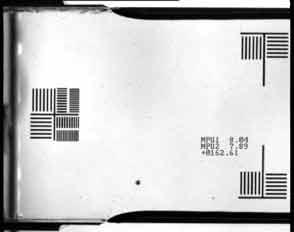parallel plate channel
critical velocities in open capillary channels: choking

A liquid flow through an open capillary channel is investigated experimentally under reduced gravity conditions (microgravity). The channel consists of two parallel plates and has two free surfaces at the sides. Depending on the applied volume flux, the liquid pressure decreases in the flow direction due to flow losses. To achieve stationary flow conditions the difference between the liquid pressure and the ambient pressure has to be balanced by the capillary pressure of the free surface. For a certain flow rate the luqid surfaces collapse at the end of the capillary and gas ingestion occurs at the outlet. This effect occus in analogy to the choking effect know from gas dynamics when the flow velocity reaches the speed of longitudinal capillary waves.
flow rate limitation due to choking
The phenomenon of flow rate limitation caused by a choked flow is well-known from one-dimensional flows in gas dynamics and liquid flows in open channels under terrestrial conditions. Choking occurs when the fluid velocity v locally reaches a limiting wave speed. In compressible gas duct flows the characteristic limiting wave speed is defined by the speed of sound vs. The characteristic number is the <dfn>Mach</dfn> number M = v/vs, and the maximum flow passes through a duct when Ma = 1. In gravity dominated open channel flows the speed of shallow water waves vw corresponds to the limiting velocity. The flow is characterized by the <dfn>Froude</dfn> number Fr = v/vw , and choking occurs for Fr = 1. A close analogy exists between both flow types since the pressure induced variation of density influences the gas flow in the same manner as the pressure induced change of cross sectional area influences the open channel flow. As a consequence, the specific characteristic wave speeds can be derived from the same universal form.
experiments
In our experiments we found a simmilar effect occurs in open capillary channel flows. The video shows the front view of the channel during the experiment aboard of the sounding rocket TEXUS-37. Due to total reflection the two liquid surfaces appear dark. A steady flow is only achieved for a flow rate below the critical value (Q < Qcrit). For Q > Qcrit the surfaces collapse at the channel outlet and the flow changes from quasi-steady singel phase flow to a unsteady two phase flow. Analogous to the above mentioned phenomena we introduce the capillary Speed index
S = v/vc where vc is the speed of longitudinal
small amplitude waves in open capillary channels. The theoretical considerations as well as the experiment evaluation show, that the surface collapse sets in for S = 1 which indicates flow rate limitation due to choking.



 "
"